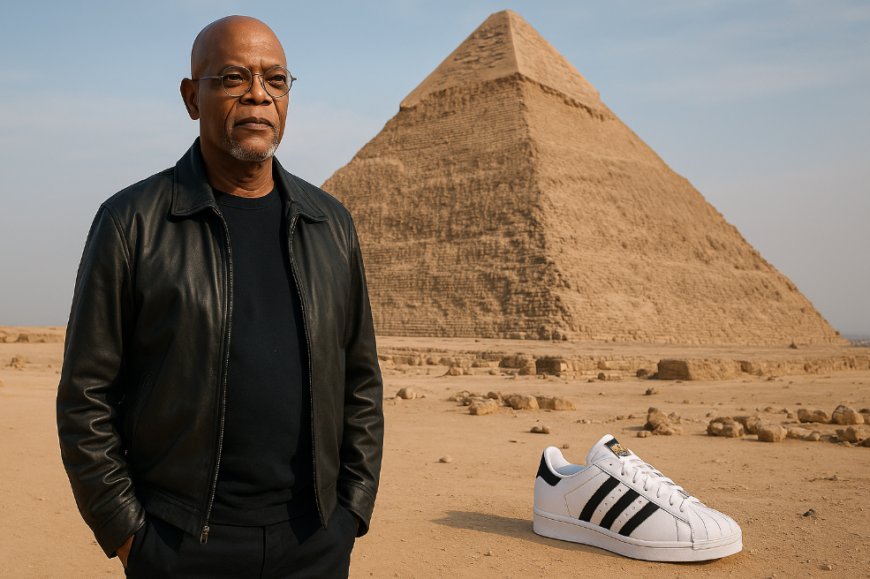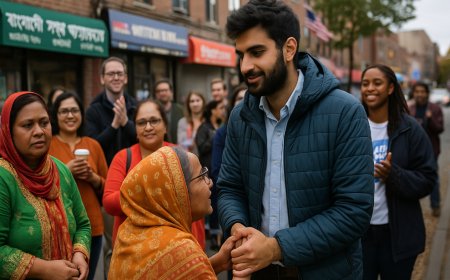Samuel L. Jackson and the Adidas Superstar: Why He Calls Them the Modern Pyramids of Culture
Explore how Samuel L. Jackson’s bold statement about the Adidas Superstar being the ‘modern pyramids’ reflects this iconic sneaker’s enduring influence on fashion, music, and global street culture.

When a Hollywood titan like Samuel L. Jackson makes a statement, the world listens. So when the legendary actor recently declared that the Adidas Superstar sneakers are like the “modern pyramids,” sneakerheads, pop culture enthusiasts, and fashion historians alike took notice. But what does he mean by this intriguing comparison? How can a humble sneaker be likened to an architectural wonder that has stood the test of time for thousands of years?
To understand the depth behind Jackson’s remark, we need to revisit the cultural journey of the Adidas Superstar — from its basketball court origins to its rebirth as a global streetwear icon. The analogy perfectly captures not just the shoe’s legacy, but its timeless presence across generations.
The Origins of an Icon
The Adidas Superstar was first introduced in 1969 as a revolutionary basketball shoe. Its low-top silhouette, all-leather upper, and distinctive rubber shell toe were groundbreaking at the time, offering players more comfort and durability than the traditional canvas options.
The shoe quickly became a staple on the court, with nearly 75% of all NBA players sporting Superstars by the mid-70s. Basketball greats like Kareem Abdul-Jabbar were among its early ambassadors. For many athletes, the Superstar wasn’t just a sneaker; it was a symbol of performance and style.
The Birth of a Streetwear Legend
While the Superstar’s athletic success is impressive, its real cultural milestone arrived in the early 1980s. Hip-hop, still in its formative years, was reshaping music, fashion, and youth identity. And right at the heart of this cultural revolution was Run-D.M.C.
The pioneering rap group famously adopted the Adidas Superstar as their unofficial uniform — worn laceless with the tongue pushed out, paired with tracksuits and gold chains. Their defiant, streetwise style was a sharp contrast to the flashy costumes worn by other performers at the time.
In 1986, Run-D.M.C. released “My Adidas,” an anthem that celebrated the shoe and its significance within the urban community. The song did more than pay tribute — it transformed the Superstar into a cultural symbol and secured the first-ever endorsement deal between a hip-hop act and a sportswear brand. This moment redefined how brands and music could intersect, laying the groundwork for today’s billion-dollar sneaker culture.
Samuel L. Jackson’s Take: Pyramids of Pop Culture
So why does Samuel L. Jackson — known for his commanding presence on and off screen — equate the Superstar with the pyramids?
In an interview, Jackson elaborated that the Superstar’s legacy is about endurance and universal recognition. Just like the pyramids of Giza stand as lasting testaments to ancient civilization, the Superstar stands as a testament to modern street culture’s global influence. It’s a creation that has lasted decades and will likely last for decades more.
Jackson’s words ring true. From the playgrounds of New York to fashion runways in Paris, the Adidas Superstar remains instantly recognizable. Its clean design and adaptable style have allowed it to cross boundaries of age, gender, and geography — a true ‘pyramid’ of our time.
Timelessness in a Changing World
One reason the Superstar remains relevant is its simplicity. In an industry often driven by hype, new colorways, and collaborations, the Superstar’s classic white leather with black stripes never loses its charm.
Celebrities, athletes, musicians, and everyday fans continue to embrace the shoe because it can be anything: retro, rebellious, minimalist, or luxurious. Whether worn by a breakdancer spinning on cardboard or by a supermodel stepping onto a couture runway, the Superstar adapts while retaining its core DNA.
The Power of Celebrity Endorsement
Samuel L. Jackson’s statement is more than just an offhand compliment. It’s a reminder of the power celebrities wield in shaping cultural narratives. When someone of Jackson’s stature aligns himself with a product, it reinforces the product’s relevance.
Over the decades, the Superstar has been championed by a who’s who of icons: from Run-D.M.C. and Missy Elliott to Pharrell Williams and Beyoncé. Each generation of artists reinvents the shoe’s image while staying true to its classic roots.
In many ways, Jackson’s endorsement feels like a passing of the torch — a nod to the new generation to keep the legacy alive.
More Than Just Footwear
Part of what makes the Superstar feel so monumental is that it has transcended being ‘just a shoe.’ For many, it represents memories — the first pair bought with saved-up allowance, or the beat-up pair worn during high school hallways. It’s woven into the personal stories of millions.
Streetwear historians point to the Superstar as a pivotal turning point: proof that sportswear could shape everyday fashion. Long before ‘athleisure’ was a buzzword, the Superstar blurred the lines between athletic performance and lifestyle wear.
A Global Legacy
The Superstar’s influence is not confined to America. From Tokyo to London, the shoe is as popular today as it was in the 80s. Adidas has continually embraced this global reach through collaborations with international artists and designers.
In Asia, collaborations with streetwear designers and pop idols have sparked massive demand. In Europe, the Superstar remains a go-to for casual, effortless cool. And in Latin America, it’s a favorite among skaters and artists who value its blend of comfort and iconic status.
The Modern Pyramid: Built to Last
Jackson’s “modern pyramids” metaphor works on another level too: durability. Pyramids were built to withstand time, weather, and generations. Likewise, the Superstar’s sturdy build has helped it last where other trends faded. The classic shell toe, initially designed to protect players’ feet, has become an enduring symbol of functional design.
Innovation Meets Nostalgia
While Adidas has experimented with futuristic silhouettes and new technologies, the Superstar remains a beacon of nostalgia. Yet the brand also knows when to innovate — new versions include sustainable materials, limited-edition artist drops, and updated fits that appeal to a new generation.
This balance between honoring history and embracing change is what keeps the Superstar relevant. Like the pyramids, it’s a link between eras — between old-school street style and the cutting-edge fashion landscape.
The Sneaker That Connects Generations
It’s not unusual to see parents and kids wearing matching pairs of Superstars. For older fans, it’s a reminder of breakdancing battles and Run-D.M.C. concerts. For Gen Z, it might be the ‘vintage’ choice that feels authentic and retro-cool.
This ability to connect generations gives the Superstar a cultural gravity few products can claim. It’s not just an object; it’s a conversation starter, a memory bank, and an everyday piece of history.
Final Thoughts: Why Samuel L. Jackson Is Right
When Samuel L. Jackson calls the Adidas Superstar the ‘modern pyramids,’ he reminds us that pop culture has its own monuments — built not from stone but from ideas, trends, and the people who carry them forward.
What's Your Reaction?
 Like
0
Like
0
 Dislike
0
Dislike
0
 Love
0
Love
0
 Funny
0
Funny
0
 Angry
0
Angry
0
 Sad
0
Sad
0
 Wow
0
Wow
0












































